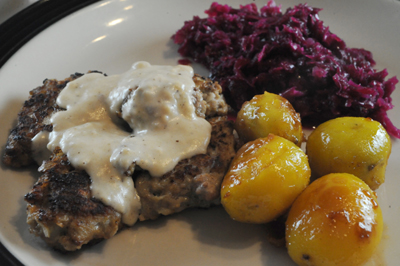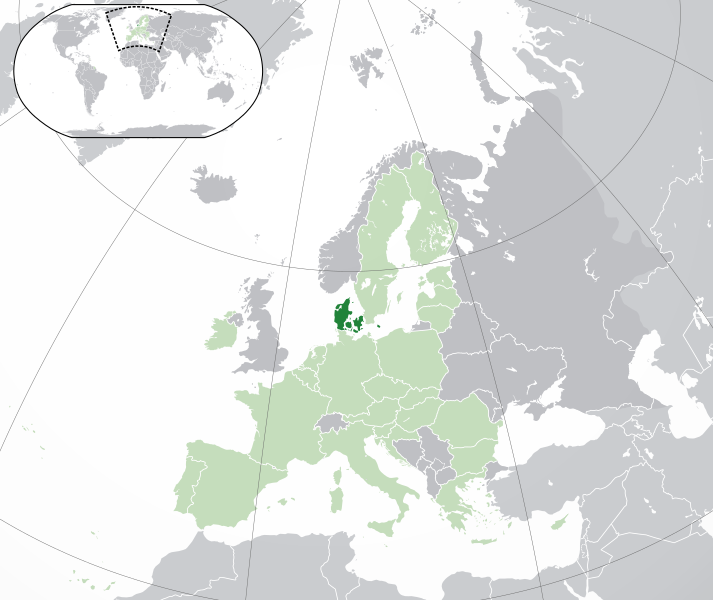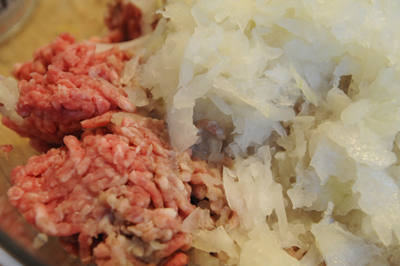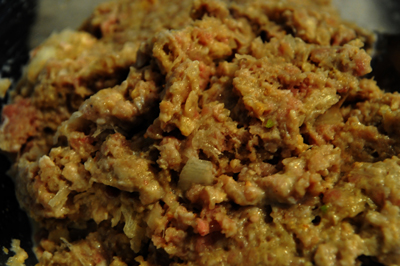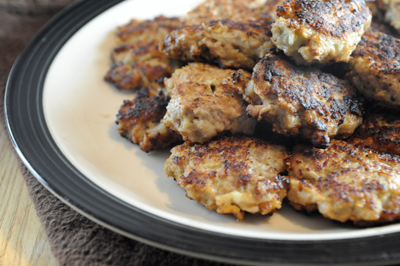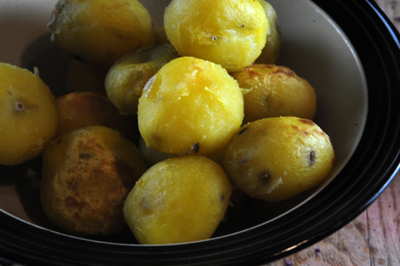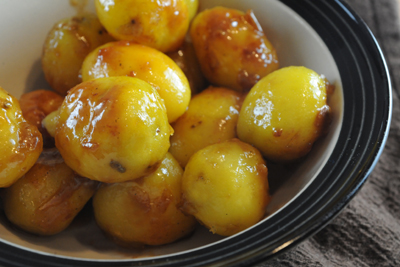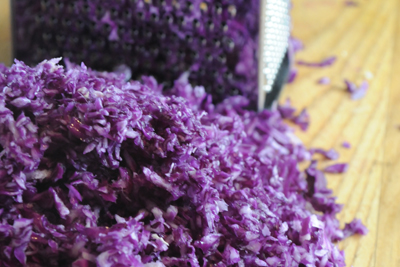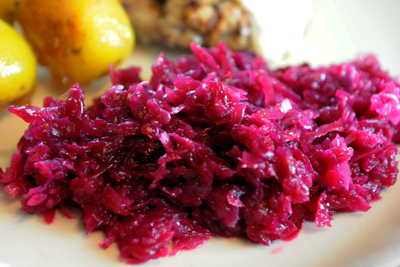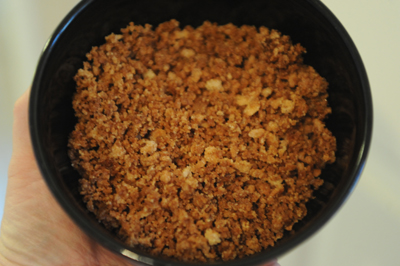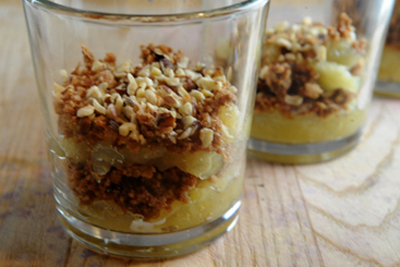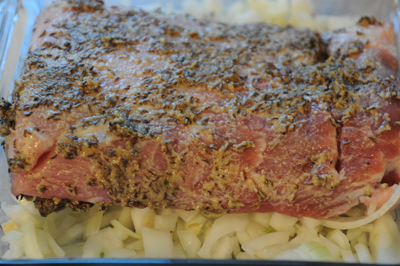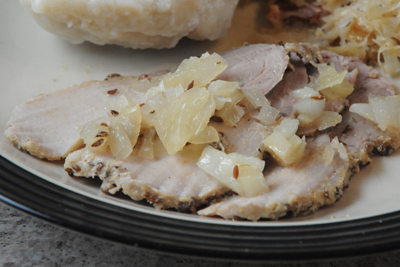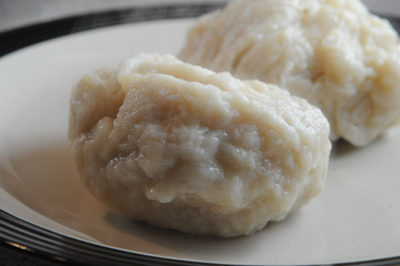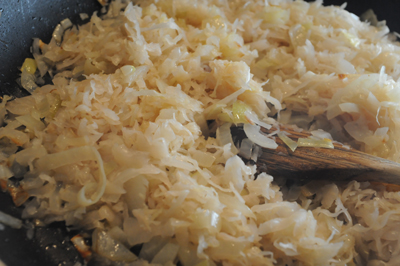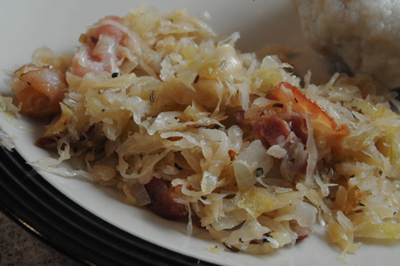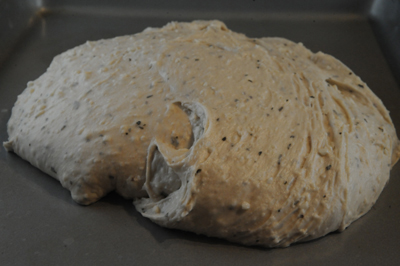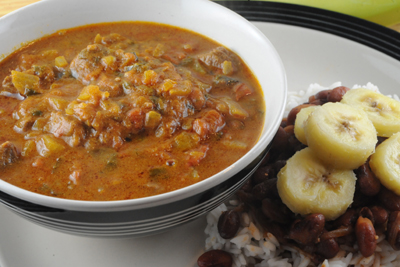 |
There are several places online that carry palm soup base, and honestly I don't know how they stay in business. The palm soup base cost $3.99 (on average), and the shipping was at least $15 (one site wanted $40 (!!!)). That's not a flat rate, either. If you start adding stuff to your basket to try to make it worth spending that much on shipping, the rate just keeps going up and up and never actually reaches the point where it is less than the cost of the actual products. I don't know about you, but I'm not spending that kind of money to ship a few cans of food. But I still wanted that palm base.
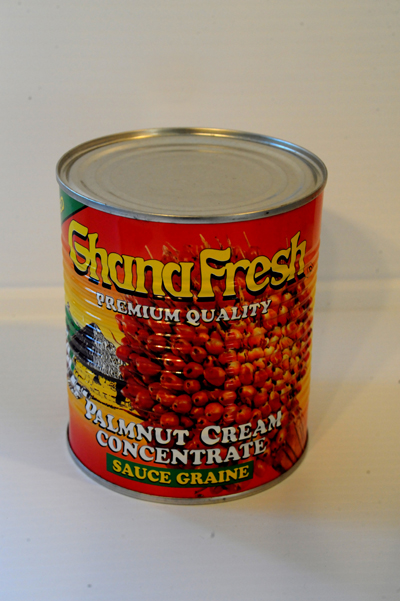 |
 |
| Masisi Territory, Democratic Republic of the Congo. Photo Credit: United Nations Photo via Compfight cc |

It always seems so odd to segue off from horrible violence and death to food, but this is a food blog so off we go. Congolese food is really more or less the same as what you would find in many other African nations: most meals consist of a starch such as fufu (my arch nemisis) and a stew containing vegetables and sometimes meat. Freshwater fish are plentiful in the Congo River, which means that they are also an important part of the Congolese diet. The Congolese also eat a lot of goat and edible insects such as grasshoppers and caterpillars. Now, the last time I openly said I was pretty sure I would never eat a grasshopper or caterpillar, a giant ego floated down from Foodieland with various insults about whether or not I was truly worthy of calling myself an international food blogger, so I'll just shut my mouth and tell you what I decided to cook this week (no, it does not contain grasshoppers or caterpillars).
Moambé Stew
(from The Congo Cookbook)
- 2 to 3 lbs stew meat, cut into bite-sized pieces
- Juice of one lemon
- Salt to taste
- 1 minced chile pepper (or about 1/2 tsp cayenne pepper)
- 2 tbsp palm oil
- 2 onions, chopped
- 6 to 8 ripe tomatoes, chopped
- 3 cups water
- About 1 cup spinach, collards or kale, or similar, washed and chopped (optional)
- 1 cup moambé (palm soup base) or unsweetened peanut butter*
And on the side:
Loso na Madesu (Congolese Beans and Rice)
(from Immigrant Kitchens)
- 1 lb dried red beans
- 1/2 small red onion, sliced thinly
- 1/4 green bell pepper, sliced thinly
- 1/2 cup olive oil
- 1 tbsp tomato paste
- 1 tsp ground nutmeg
- 1 tsp salt
- 3 bay leaves
- 1 tsp garlic salt
- 2 cups rice
- 4 green bananas
Actually, it was all quite surprisingly simple, except for forgetting to soak the beans (I bet you are so surprised). But first the stew:
Combine the lemon juice, salt and chili pepper (or cayenne) and pour over the meat. Let marinate in the fridge for at least 30 minutes (more if you like).
 |
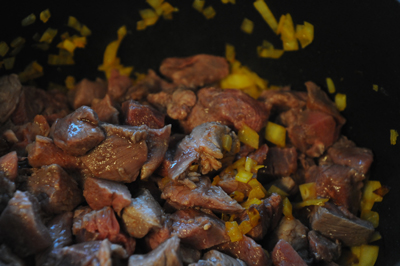 |
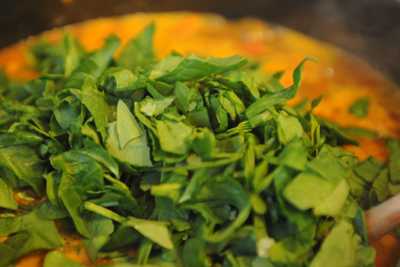 |
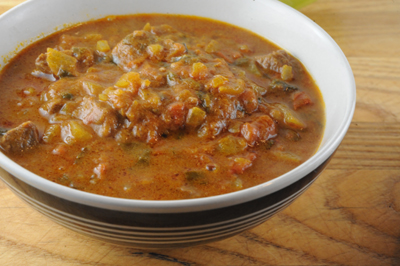 |
A quick Google search reassured me that "the botulinum toxin is destroyed by thorough cooking over the course of a few minutes," so since this was going to be on the stove for an hour I felt like I could be reasonably sure I wasn't going to poison my family. But still.
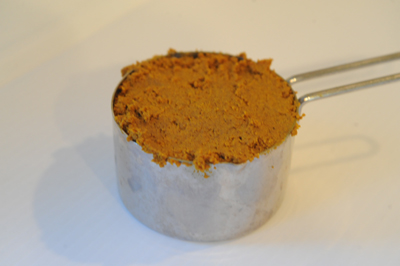 |
| Not a great photo, I know, but this should give you an idea what to expect. |
My palm base looked like a paste, with kind of the consistency of wet sand. There was no real liquid in the can at all, it was just all paste, dryer than peanut butter or curry paste or any of those other pasty things you're used to seeing in jars and cans. So anyway, if that's what your palm base looks like too, I guess you shouldn't worry. I guess.
Next the beans:
You are, of course, supposed to soak these overnight. But I didn't, because I forgot, which you probably already know is not the first time. So instead I cooked them in my pressure cooker until they were soft.
If you did soak your beans, you'll need to cook them over the stove for about 40 minutes after draining.
Meanwhile, heat the oil over a medium flame and cook the onions until translucent. Then add the green pepper and keep stirring for another minute or two.
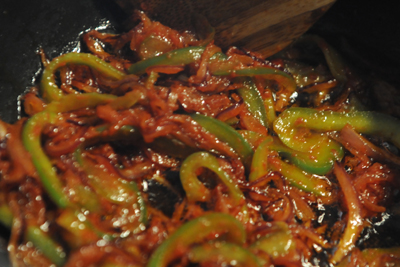 |
Add the nutmeg, salt and a little more water (if necessary to maintain consistency). Now transfer the beans to the pot and stir to mix. Add the bay leaves.
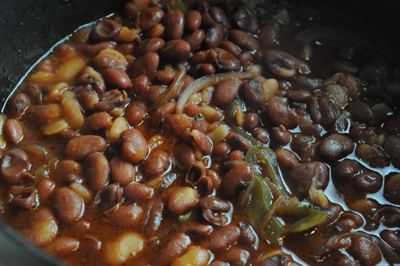 |
Meanwhile, boil a large pot of water and add the bananas, skins on. Cook until the skins start to split, then remove from the water and let cool for a few minutes. When cool enough to handle, remove the skins and slice into bite-sized pieces.
 |
 |
But really, us grownups enjoyed it. The stew was really good, and the palm base did give it a nice, unique (though mild) flavor. It would have been a totally different meal if I'd used peanut butter instead. Was it worth the headache of actually obtaining the stuff? Well, no, not really. But still, the quest itself was part of the fun. I think.
I liked the beans, too, probably more than Martin did. Actually it was because of the boiled green bananas. I adore boiled green bananas. To me, that's what a plantain should taste like but doesn't (though I've been told many times that I'm just not doing plantains right).
So there's the Democratic Republic of the Congo. I think I'll be taking a break from ingredient quests, now, at least for a few weeks.
Do you have any favorite international recipes? Please share!
Next week: Dhekelia
For printable versions of this week's recipes:












